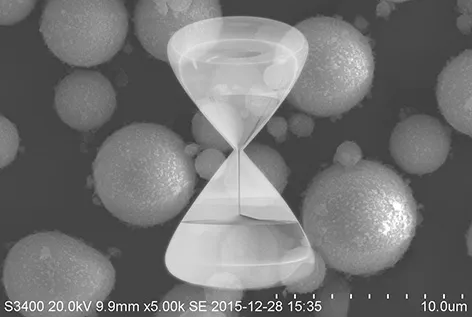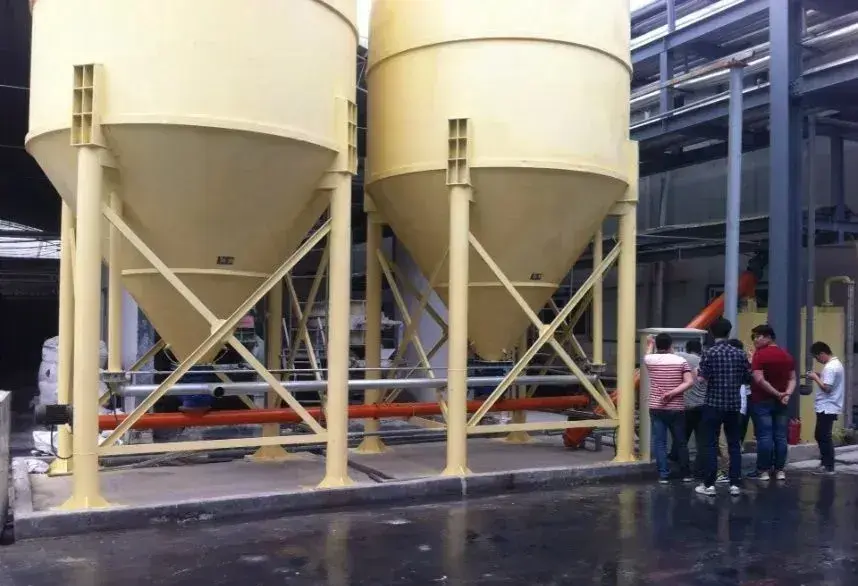The cathode and anode materials of lithium-ion batteries are typical powder materials.
Ultrafine pulverizer machine plays an important role in powder materials.
It affects the particle size, specific surface area, and packing density of electrode powder, which influence battery reaction speed and energy density.
It has a significant impact on the battery’s output and cycling performance.
Powder characteristics directly relate to battery performance, so the design and processing of electrode materials are crucial. This paper will introduce the application of powder technology in lithium battery electrode materials.
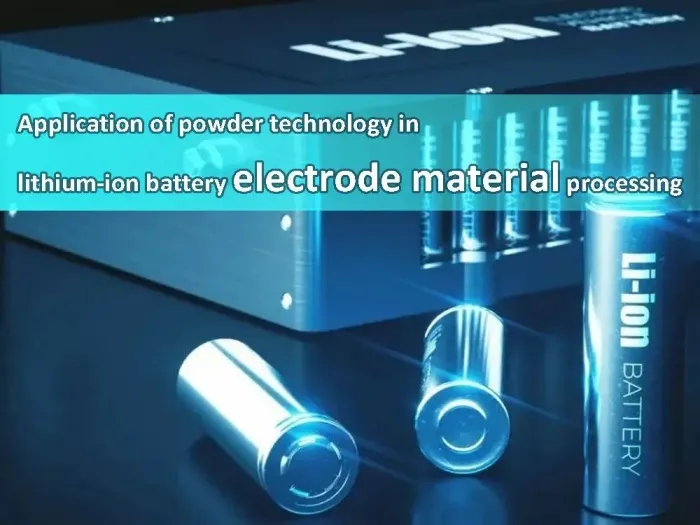
Electrode materials and powder technology
Controlling the particle size of electrode materials
The particle size of electrode materials plays a decisive role in the performance of lithium-ion batteries. Generally, the particle size of electrode materials directly affects the preparation of battery slurry and electrode sheets. Large particle size slurry has low viscosity and good fluidity, requiring less solvent and higher solid content. When the powder particle size decreases, the compact density and capacity can be improved to some extent.
The particle size of electrode materials is usually tested using a laser particle size analyzer, with the equivalent diameter D50 of the largest particle in the cumulative distribution curve as the average particle size. Taking the cathode material as an example, the particle size and distribution of cathode materials are closely related to the preparation, sintering, and crushing processes of the precursor.
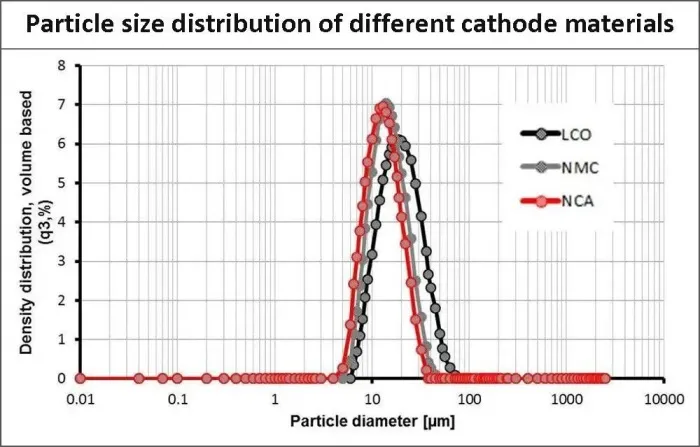
For example, lithium cobaltate is generally prepared using Co3O4 and lithium carbonate as raw materials. Its sintering characteristics are very good, so the requirements for raw materials are relatively low. Lithium manganate mostly uses the same raw materials as alkaline manganese batteries—electrolytic manganese dioxide (EMD). The production process involves depositing a whole MnO2 plate through an electrolytic process, then peeling and crushing it to obtain the material.
Raw materials usually have large irregular particles, so spherical manganese source precursors are used to control the particle size distribution. For materials like lithium nickel cobalt oxide, nickel cobalt manganese oxide, and nickel cobalt aluminum oxide, chemical coprecipitation is commonly used in industrial production to achieve atomic-level mixing of elements like Ni, Co, Mn, and Al. High density is achieved by controlling crystallization, and these processes fall under the domain of powder particle size control techniques.
Controlling the specific surface area of electrode materials
Generally, the larger the specific surface area of the electrode material, the better the battery’s rate capability. However, it is more prone to reacting with electrolyte materials, leading to poorer cycling and storage performance. The specific surface area is closely related to particle size and distribution, surface porosity, surface coating, and other factors. In the lithium cobaltate system, electrode materials with smaller particle sizes correspond to the highest specific surface area.
Due to the poor conductivity of lithium iron phosphate, its particles are designed in the form of nanoscale aggregates, with an amorphous carbon coating, resulting in the highest specific surface area among all positive electrode materials. Compared to cobalt-based materials, manganese-based materials are inherently difficult to sinter and usually have a larger specific surface area.
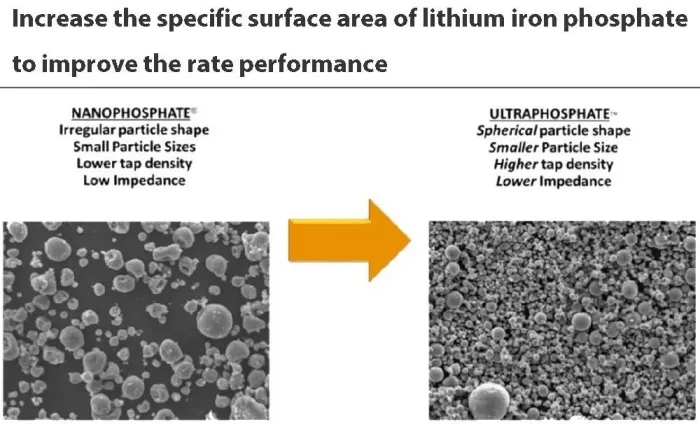
Controlling the specific surface area is essential to meet battery requirements. This is based on material properties. It is also an application of powder technology in electrode material preparation.
Controlling the particle morphology of electrode materials
A typical application of improving electrode material performance through particle morphology is the spheroidization of natural graphite. Currently, the application of lithium-ion battery anode material manufacturers is gradually moving toward cost reduction. Therefore, global research on natural graphite is very important. Although natural graphite has the advantages of high capacity and stable discharge voltage as an anode, it also has significant drawbacks:
During the charging process, solvent molecules co-intercalate with lithium ions into the graphite layers, causing the graphite layers to “delaminate,” resulting in structural damage and a rapid deterioration of electrode cycling performance.
At the same time,ordinary natural graphite has a well-developed layered structure and is in the form of sheets. During filling, it easily aligns parallel to the electrode sheet, which increases the diffusion distance for lithium ions, raising diffusion resistance and reducing charging and discharging performance.
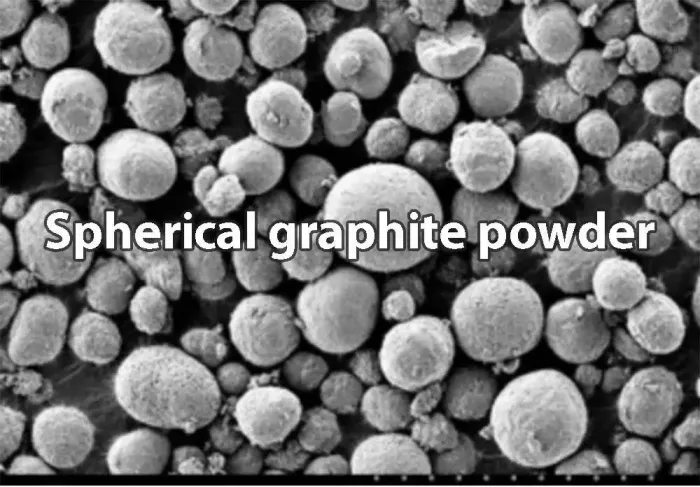
After spheroidization of natural graphite particles, the graphite layers are distributed in all directions.
The preferred orientation becomes smaller, and the distribution is more uniform. The diffusion path of lithium ions is shorter, which improves discharge efficiency.
Similarly, other material types can be modified through appropriate spheroidization. At the same time, spheroidization improves powder material packing and uniform distribution. This further enhances the volumetric energy density and cycling performance of lithium-ion batteries.
Surface modification by coating with other powder materials
Nickel-cobalt-manganese (NCM) ternary materials are currently the most widely used cathode materials for power batteries. As the demand for high energy density increases, issues like poor structural stability and humidity sensitivity after high nickel content pose challenges for practical applications. Top lithium battery manufacturers often use surface coatings to adjust the performance of material .
Surface coatings can effectively stabilize the structure of high-nickel materials. Surface coating technology reduces the contact area between electrode materials and electrolyte. This reduces side reactions between surface impurities and electrolyte, improving electronic conductivity. It enhances the stability of ternary cathode material and increases cycle life. Common surface coating materials include metal oxides, phosphates, and other stable electrode materials.
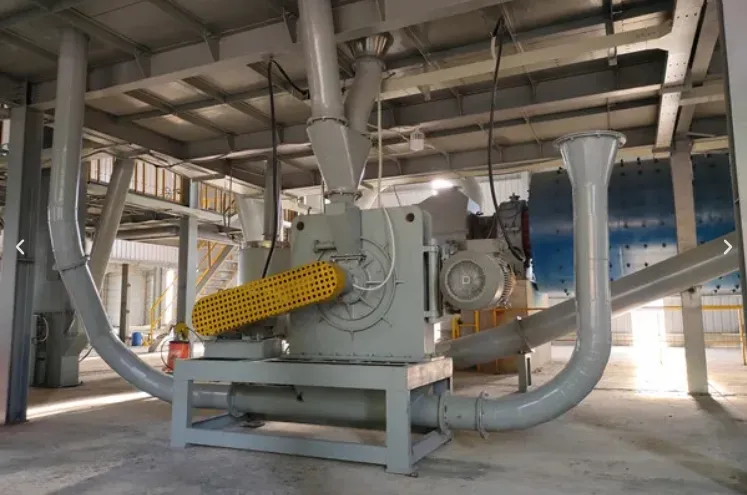
Mixing and dispersing of various powder materials
In the production of lithium-ion battery electrodes, various components such as active materials, binders, solvents, and additives are added and mixed to form a slurry.
Therefore, the dispersion of particles and the uniformity of the composition become very important.
During the actual stirring process, the electrode materials undergo very complex changes. In addition to strong physical interactions, there are also certain chemical interactions.
Even if uniformity is achieved macroscopically, some material particle agglomerates may still exist under a microscope. Therefore, the mixing of electrode materials must be not only macroscopically uniform but also relatively uniform microscopically. The more uniform the mixture, the more it helps improve the battery’s performance.
In addition, the uniform mixing of two or more electrode materials can improve battery performance or achieve cost optimization.
With the continuous advancement and upgrading of battery technology, production equipment like lithium battery homogenization systems and powder delivery systems are also constantly innovating and upgrading.
Many lithium battery equipment suppliers study mixing and dispersion mechanisms in depth. Their goal is to achieve higher production line integration, greater efficiency, lower energy consumption, and smarter manufacturing. These advancements form the foundation for process improvements and high-quality product manufacturing. They also represent the industrialization of powder technology.
conclusion
Powder technology has many applications in the processing of lithium battery electrode materials and even in battery manufacturing. Powder technology is inseparable from ultrafine pulverizer machine. Powder Processing Technology of ultrafine pulverizer machine has become a key technique in the preparation, post-processing, and electrode production of lithium battery products, such as motorcycle and fish finder batteries. It plays a crucial role in improving lithium-ion battery performance.
The powder industry spans multiple sectors, with overlapping equipment and process principles.
Gaining new insights into lithium battery electrode materials from a powder technology perspective helps integrate key aspects of material preparation and application. This approach can identify new innovation opportunities and further drive the development of the lithium battery industry.
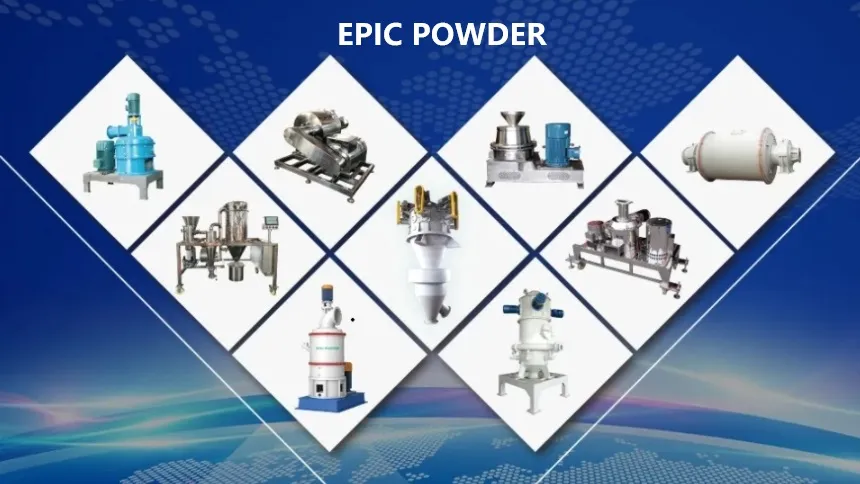
epic powder
Epic Powder, 20+ years of work experience in the ultrafine powder industry. Actively promote the future development of ultra-fine powder, focusing on crushing,grinding,classifying and modification process of ultra-fine powder. Contact us for a free consultation and customized solutions! Our expert team is dedicated to providing high-quality ultrafine pulverizer machine and services to maximize the value of your powder processing. Epic Powder—Your Trusted Powder Processing Expert!
